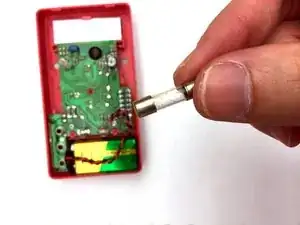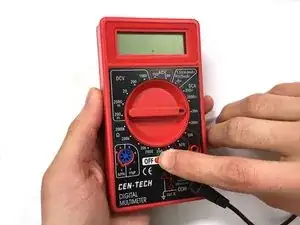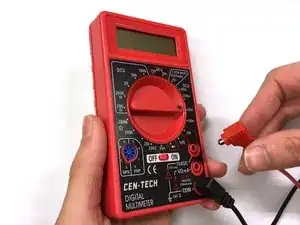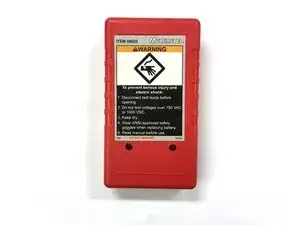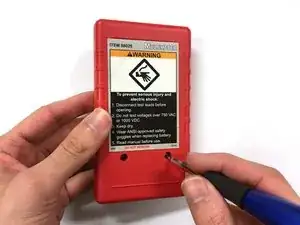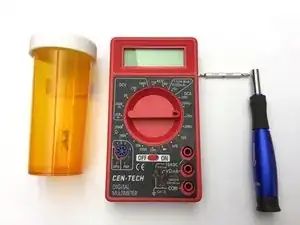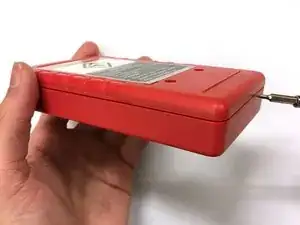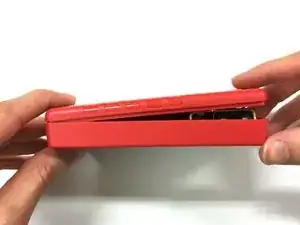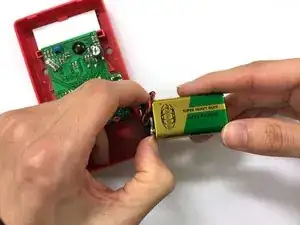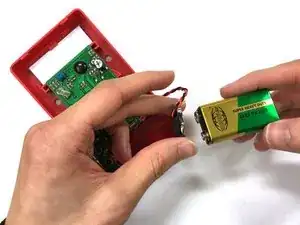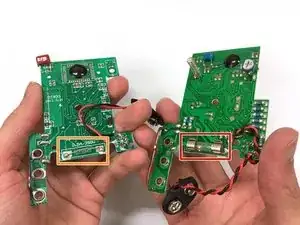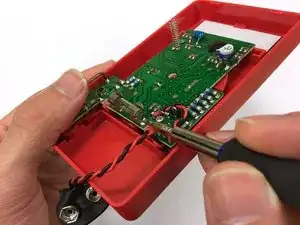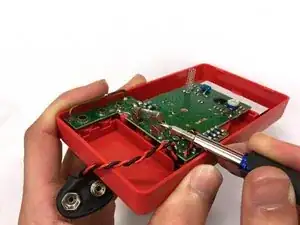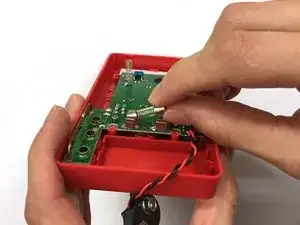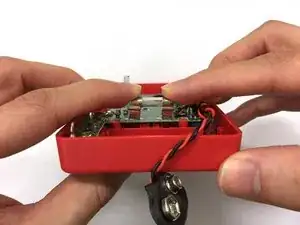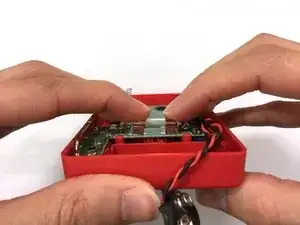Einleitung
Even the most experienced electrical engineers forget to properly set their meters when making a quick voltage check. Next thing you know, there's a flash and a pop and your fuse is dead. Fuses protect the device from damage and are cheaper to replace than the entire device. These 7 function digital multimeters have multiple modes of operation, with current measuring functionality that set them apart from the cheapest of meters. The current measuring modes, located on the right side of the dial, are the only modes that rely on the protection of the fuse. When the fuse is blown, the device can not pass or measure current, but the other 6 functions continue to work like normal. Giving the meter a new fuse can restore functionality. Fuses can be fragile and should be treated with care when handling them, just as with any electronic device. Avoid grabbing the fuse by the middle glass or white ceramic center body. Skin oil on the glass can degrade the natural lifetime of the fuse and holding fuses by their center using fingers or pliers could crush the fuse body. This guide walks through the fuse replacement process from start to finish, pointing out the various hazards along the way, ensuring a problem free fix.
Werkzeuge
Ersatzteile
-
-
Remove the first screw from the backplate using a Phillips #0 Screwdriver.
-
Store the first screw in a safe place.
-
Repeat this process for the second screw.
-
-
-
Pry the case apart at the bottom to make it easy to work with.
-
Slide the backplate towards the bottom of the meter, freeing the backplate from the two top retention tabs.
-
Remove the backplate and store it in a safe place out of the way.
-
-
-
Pull the battery out to be able to work with the battery clip.
-
Disconnet battery clip.
-
Locate your meter's fuse. There are two types of fuses you could find in your meter. The third image shows both kinds of fuses being compared.
-
Replaceable fuses: These fuses are the biggest type, being held in only with metal clips. These are the easiest to replace.
-
Integrated fuses: These fuses are soldered onto the circuit board. These fuses can still be replaced, but you may need to order special fuses online, and you will need to know how to solder and have soldering tools.
-
-
-
Place the head of a Flathead 3/32 Screwdriver under one of the fuse’s metal endcaps.
-
Leverage the screwdriver to flip one end of the fuse up and out of the clip.
-
Grab the metal endcap of the fuse and pull on the fuse to slide the other endcap free from the last clip.
-
-
-
Trade out the bad fuse for the new fuse.
-
Place the new fuse to sit on top of the two clips.
-
Hold down the fuse on both sides, and press the fuse into the clips
-
To put the meter back together, go through steps 4 through 1 in reverse order. Your meter now has a new and working fuse, allowing the rightmost "DCA," or current measuring modes, to be functional once again.
5 Kommentare
The one I have does not have fuse holder. Small, axial leaded fuse is soldered in.
In making this guide, I did find some cheaper red meters like the one above that had the same pre-soldered fuse you described. As far as I know, I have been able to confirm that Home Depot, Lowe’s, Hardware Sale’s and Ace do carry replacement fuses of this type, at least the lucky few stores I have visited around my state. In the case of these types of fuses, one would need to be familiar with the skill called soldering. But having to solder makes this guide more difficult if one is new to soldering. You can find out more about soldering here: Wie man Lötverbindungen herstellt und entlötet
It says on the front that max is 200mA, can you tell me why you say to use 500mA fuse instead of a 200mA fuse? Thanks in advance.
Sharp eyes and excellent question! I’ll be glad to answer.
Notice how most of the numbers on the front are in units of 2, 20, 200 and such. On most meters numbres such as 1 10 and 100 are used to indicate their range, however; with theses meters being so cheap and disposable, they have an issue with accuracy. If you go above the specified number (ie 30 volts or 300mA) the accuracy can not be maintained. If you were to make your own meter using normal standard components, you’d be lucky to be accurate with ±20% (based on the values of resistors, capacitors, and any critical components). Often, the higher you go (in terms of input voltage or current) the less accuracy you have (components warming up causes value drifting, eg a resistor value increases). So while the internal electronics are rated at more than 500mA, the fuse is added for protection, but above 200mA your measurements could be 20% off.
Meters become more expensive as they become more accurate, due to using better internal components.
1st rate no critique need except positive !!!!
